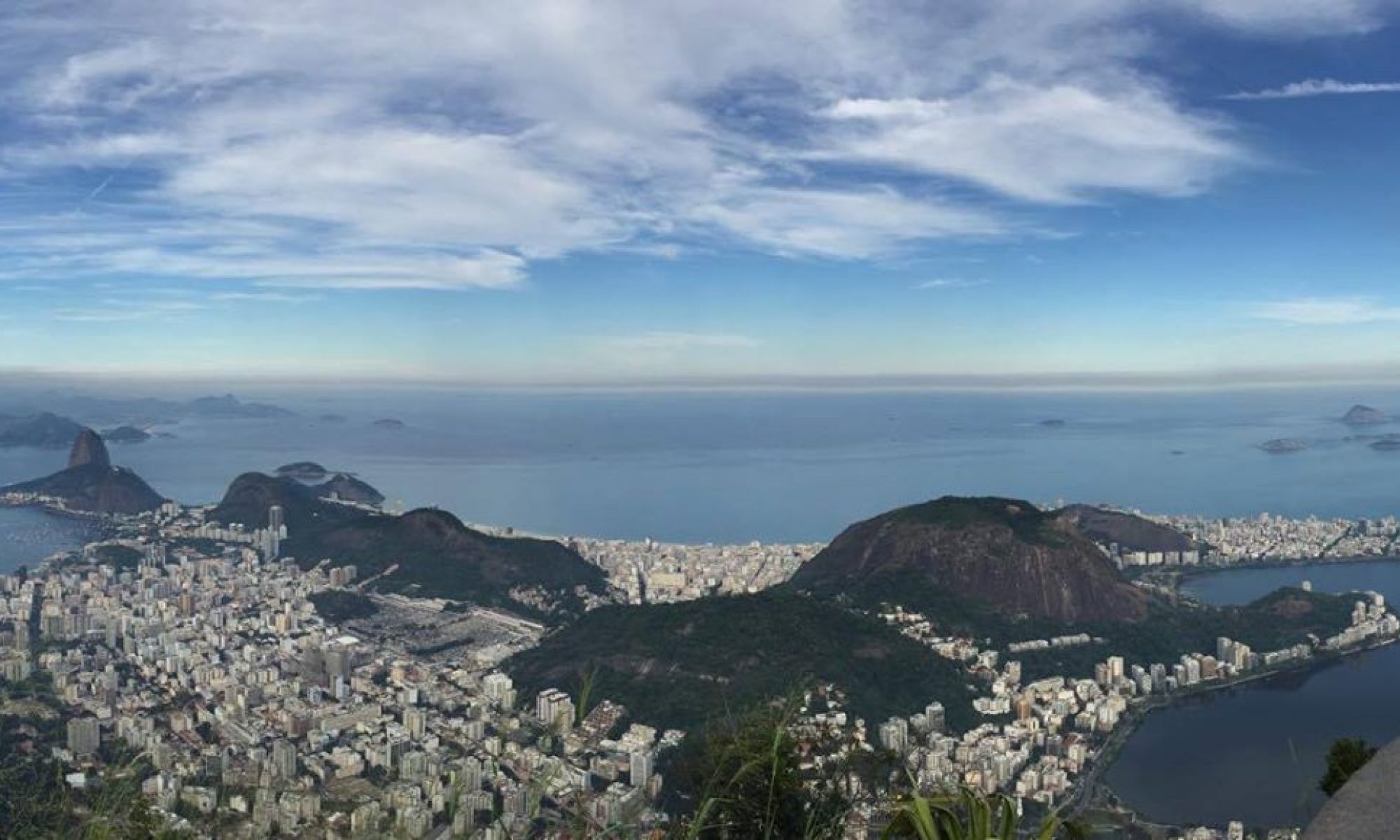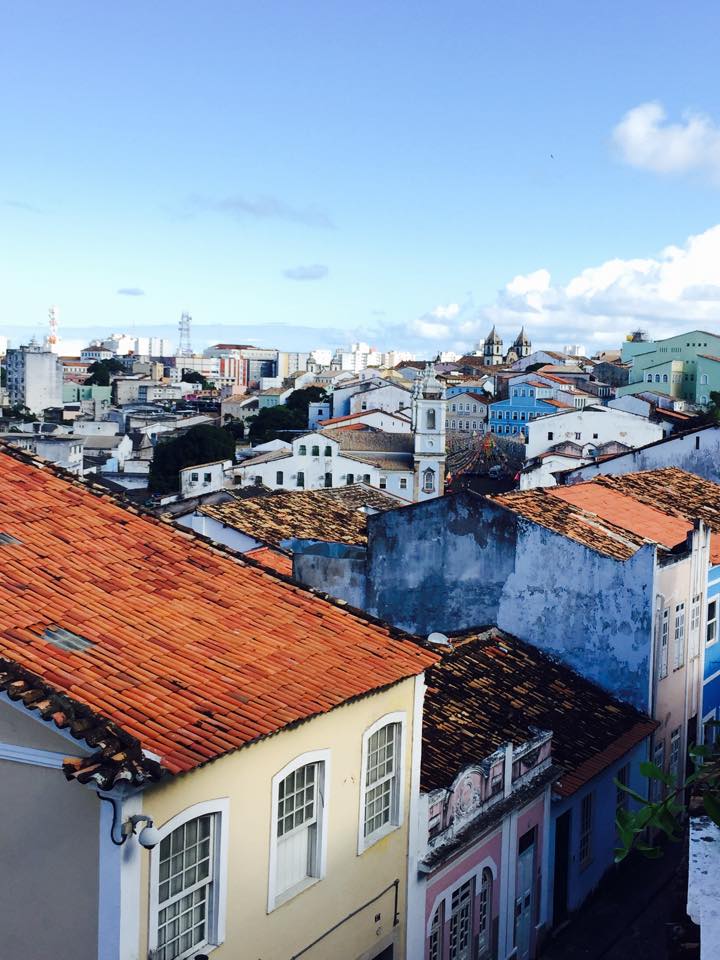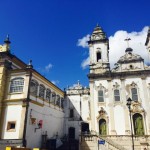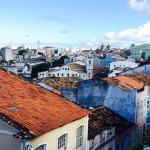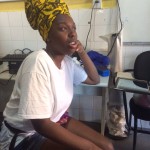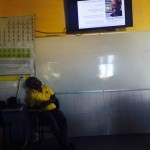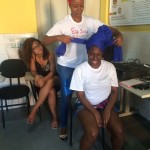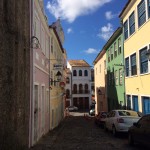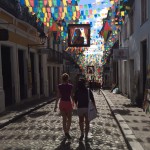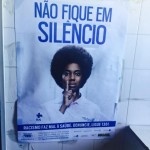June 18, 2015
By: Paul-Anne Robb and Julie Foong
We set foot from our hostel at 9am to make our way to Steve Biko Cultural Institute in Pelourinho where we had two presentations. The first was led by George Oliveira, a director of the institute. He started us with the brief discussion on the history of Brazil and the education system. Once he explained the history, he began to explain how the education system affects the Black population in Brazil.
There are public and private high schools and universities. The public schools are paid for by the state, and the private schools are paid out of the pocket. However, in terms of quality of education and the preparation taken by the schools for higher education, private high schools contribute more social and cultural capital for its students to prepare them for the entrance exam for the universities. Unlike the U.S. where public institutions of higher learning are paid for by individuals, Brazil’s public universities are paid for by the state and are seen as prestigious, which makes them highly competitive, with roughly about a 1 in 25 chance of getting a seat. On the other hand, for private universities, in U.S. they are highly valued and expensive, while in Brazil, those who tend to be unable to get into the public universities have to pay for their education in the private schools.
In Brazil, those who are unable to get to the public universities are the students who attend public high schools, where the population consists of mostly poor and Black students. To combat this disproportionate number of poor and Black students entering public universities, Brazil introduced affirmative action. This meant that the public universities would need to fill a quota of students from public schools. The federal government decided to set aside 50% of the seats in public universities for students who come from the public schools. This 50% is further split into two approaches: racial and social.The way this works is that within the 50% of seats set aside for students from public schools or students from lower economic backgrounds the seats are divided by the percentages of racial make up for that particular state. In Bahia, this equates to 80% of the 50% of seats reserved for public school students being reserved for Black students because 80% of the population in this state is Black. Other states would alter the percentage accordingly. For example, São Paulo, it is 35% instead of 80%.
This policy was met with criticisms. The question that surfaced was what it means to be Black in Brazil. In terms of self-identification, Brazilians generally look at phenotype rather than genotype, where physical appearance determines whether a person is Black. There was a case where a pair of twins were born one White and one Black. This caused a lot of controversy over the affirmative action policy. Both had the same family income, same schools but only one was eligible for the racial and the other for the social category within the quota system. Also, as race is self-identified, some would take advantage and identify as Black to gain a seat in the racial approach. Due to this, a committee was created in order to evaluate a person’s self-identification. However, this approach was also controversial and was discontinued.
After a lunch break and quick trips to some local shops, we returned for a second presentation. This presentation focused on the institute itself and the programs it offers. Their main goal is to educate students on citizenship and Black consciousness while preparing students for the university exam, and ultimately for life in a racist society. The Steve Biko Institute believes that “education is the most powerful weapon to fight inequality.” In connection to Paulo Freire, he would be in agreement with their mindset that education is a tool for the oppressed to challenge the oppressor (2012). In conquering mental slavery, the institute also aims to boost self-esteem in the process. Due to the imbalance between the skills and knowledge obtained through the public and private high schools, they set up classes to level the playing field for those with less privilege to give them a chance to pass the exams that guarantee access to higher education. In order to enter the universities, students have to take an entrance exam that spans across various subjects and is known to be quite difficult. The stress is high especially considering the number of seats versus applicants. In Federal University of Bahia, in one year there were 157,000 applicants for 6,000 seats. Other things that the institute organizes include programs on anti-racism and human rights, STEM courses (including robotics and other sciences), labor market issues, politics of the carnival, and international exchange with other colleges in U.S..
These programs have other consequences including disputes at home because the students who gain a consciousness of what it means to be Black in Brazil bring it home with them and start questioning things that they didn’t before, which may not match up with their family’s beliefs. But in this process may also encourage their families to question these social issues as well. In addition, they also made a note about how poor and Black students who study at the universities choose humanities over sciences because there is a sense of inadequacy from their high school education as they had fewer resources and exposure to the STEM fields. These inequalities come from various sources and hopefully the work that Steve Biko Cultural Institute does will help bridge the gap and enable the youth and leaders of tomorrow to gain equality.
–
Freire, Paulo. Pedagogy of the Oppressed. Ed. Donaldo Pereira Macedo. Trans. Myra Bergman Ramos. New York: Continuum, 2012. Print.
